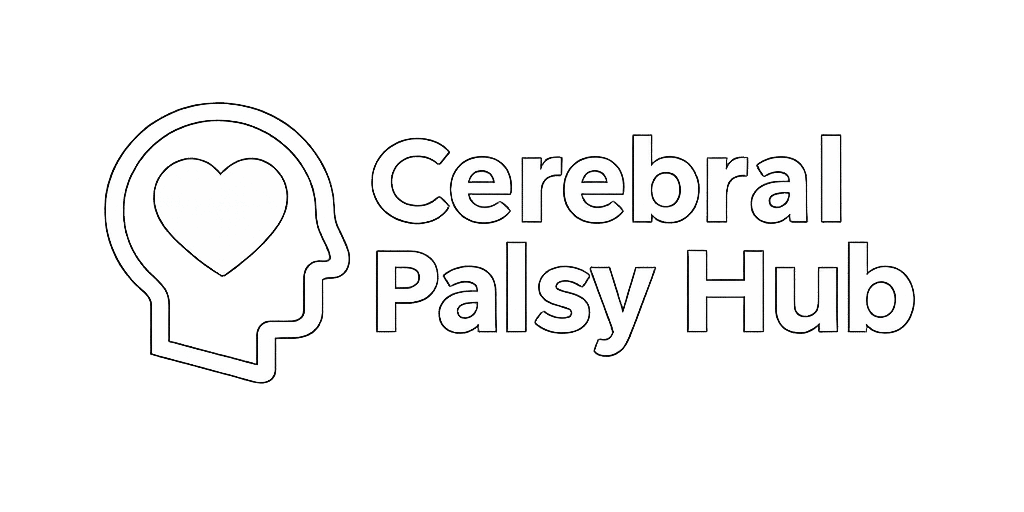Mixed Cerebral Palsy
Mixed cerebral palsy is a form of cerebral palsy where a child experiences symptoms from more than one type, such as spastic, dyskinetic, or ataxic CP. It develops when multiple areas of the brain are injured, leading to overlapping challenges like stiffness, involuntary movements, or poor balance.This overlap makes the condition more complex to diagnose and manage than a single type.
What Is Mixed Cerebral Palsy?
Mixed cerebral palsy (CP) occurs when brain damage is widespread enough to affect multiple motor-control regions, leading to a combination of symptoms. The most common form is spastic-dyskinetic CP, where stiffness and involuntary movements appear together. Some children may also show features of spastic-ataxic CP or other blends.
Symptoms vary widely, with some children experiencing primarily one set of traits and others facing an equal mix. This variability can make the condition harder to recognize early on. Unlike other forms of CP, mixed CP cannot be defined by one dominant symptom—it is identified by the overlap of multiple patterns of movement difficulty.
What Causes Mixed Cerebral Palsy?
Mixed cerebral palsy occurs when brain injury impacts several regions responsible for different types of movement control. Each region contributes differently to muscle tone, coordination, and posture, so damage in multiple areas creates overlapping challenges.
-
Motor cortex: Damage here disrupts voluntary muscle control and can cause spasticity, or tight, rigid muscles.
-
Basal ganglia: Injury in this area often results in dyskinetic symptoms like twisting or jerking movements.
-
Cerebellum: Damage here impairs balance and coordination, leading to ataxic traits.
-
White matter pathways: These connections link brain regions to the spinal cord; injury can interfere with smooth communication between brain and muscles.
When two or more of these structures are injured at the same time, the result is mixed CP, with children showing a blend of movement difficulties.
Mixed Cerebral Palsy Risk Factors
Certain factors increase the likelihood of a child developing mixed cerebral palsy, although they do not directly cause it. Many are linked to complications before, during, or shortly after birth that affect multiple brain regions.
Potential risk factors include:
-
Premature birth: Babies born very early are at greater risk of brain bleeds or underdeveloped neural pathways, which can damage multiple areas.
-
Low birth weight: Underweight infants may be more vulnerable to widespread oxygen loss or infection.
-
Birth complications: Prolonged labor, breech delivery, or lack of oxygen can cause injury across several brain regions.
-
Maternal infections: Illnesses such as rubella or toxoplasmosis during pregnancy may disrupt fetal brain development in multiple areas.
-
Severe jaundice (kernicterus): Excess bilirubin can damage the basal ganglia and other regions, contributing to mixed CP.
-
Infant stroke or trauma: Strokes or head injuries in infancy can affect both deep structures and the outer motor cortex.
Having one or more of these factors increases risk, but not every child exposed to them will develop mixed CP.
Signs & Symptoms
Children with mixed cerebral palsy often have overlapping symptoms from different CP types. This combination can make movement unpredictable and harder to manage than in single-type CP. Symptoms may also change as the child grows, since stiffness, weakness, or involuntary movements can become more pronounced over time.
The most common symptoms include:
-
Muscle stiffness or spasticity that limits flexibility
-
Involuntary or writhing movements that interfere with control
-
Balance and coordination problems, leading to unsteady walking
-
Delays in motor milestones such as crawling, sitting, or walking
-
Fluctuating muscle tone—some muscles tight, others floppy
-
Speech or swallowing difficulties caused by poor muscle coordination
Because no two children with mixed CP are affected in exactly the same way, treatment must be highly individualized.
Subtypes of Mixed Cerebral Palsy
Doctors sometimes describe mixed CP by naming the types that appear together. The most frequent combination is spastic-dyskinetic, but other mixes exist as well.
Subtypes include:
-
Spastic-Dyskinetic CP – The most common, combining stiffness with uncontrolled twisting or jerking movements.
-
Spastic-Ataxic CP – Mixes stiffness with balance and coordination problems, often causing frequent falls.
-
Dyskinetic-Ataxic CP – Less common, involving involuntary movements along with shaky or unstable walking.
-
Other combinations – Some children may have traits of all three main types, making diagnosis more complex.
These subtypes are used to better understand each child’s unique challenges and guide treatment planning.
Severity Levels
The severity of mixed CP can vary greatly depending on how many brain regions are involved and the degree of injury. Doctors often use the Gross Motor Function Classification System (GMFCS) to describe mobility levels. A child with mild mixed CP may walk independently, while a child with more severe symptoms may need full support.
(GMFCS) Levels
- Level I – Walks without limits, though some movements may be unsteady or awkward
-
Level II – Walks with some difficulty; may struggle with involuntary movements
-
Level III – Needs crutches or a walker; muscle stiffness and poor coordination may limit speed
-
Level IV – Primarily uses a wheelchair; limited standing or walking ability
-
Level V – Very limited voluntary movement, requires full assistance for mobility
Severity classification helps guide therapy choices, adaptive equipment, and family expectations for progress.
Diagnosis
Diagnosing mixed cerebral palsy requires careful evaluation, since symptoms can overlap and shift over time. Doctors often begin with a physical exam to check muscle tone, reflexes, and movement patterns. Developmental milestones, such as sitting or walking, are also tracked.
Brain imaging tests like MRI or CT scans may reveal widespread injury across multiple regions. Because children may first appear to have one type of CP before additional symptoms emerge, diagnosis may take longer compared to single-type CP.
Specialists in neurology, physical therapy, and developmental care usually work together to confirm a mixed CP diagnosis.
Complications & Associated Conditions
Children with mixed CP often face a wider range of challenges than those with a single CP type. The combination of stiffness, involuntary movement, and poor balance can place added strain on the body and affect daily life. Over time, these issues may lead to secondary complications.
Common complications include:
-
Muscle contractures and joint deformities from spasticity
-
Hip dislocation or scoliosis from uneven muscle pull
-
Seizures or epilepsy in some children
-
Vision or hearing impairments
-
Feeding and swallowing difficulties, raising the risk of malnutrition
-
Learning or speech delays caused by mixed motor challenges
Addressing complications early can help reduce their long-term impact.
Quick Fact: Cerebral palsy usually isn't diagnosed at birth. Instead it's often identified later when a child misses typical development milestones.
Treatment & Management
There is no cure for mixed CP, but treatment focuses on managing the unique combination of symptoms each child faces. Because spasticity, involuntary movements, and coordination issues can all appear together, therapy plans often involve multiple approaches.
Key treatments include:
Physical Therapy
Physical therapy improves strength, flexibility, and motor control. Exercises may focus on stretching stiff muscles while also teaching strategies to reduce uncontrolled movements. Therapists may use specialized techniques, like weighted activities, to improve coordination.
Occupational Therapy
Occupational therapy helps children build independence in daily activities such as eating, writing, or dressing. Adaptive tools may be introduced to manage both stiffness and poor coordination. Therapy often includes fine motor exercises and strategies for managing fatigue.
Speech and Language Therapy
Speech therapy supports children with communication difficulties caused by muscle coordination problems. It may also include feeding and swallowing therapy to ensure safe eating. Alternative communication devices may be introduced if speech is limited.
Medications
Medications can help reduce muscle stiffness or control involuntary movements. Baclofen or Botox may be used for spasticity, while other drugs may target dyskinetic symptoms. The right combination depends on which symptoms are most disruptive.
Surgeries
In severe cases, surgery may be recommended to correct joint deformities or relieve muscle contractures.
Mobility Aids & Assistive Devices
Mobility aids such as braces, walkers, wheelchairs, or communication devices can help children move and interact more independently. Devices are chosen based on the specific mix of symptoms and adjusted as needs change over time.
Treatment for mixed CP is highly individualized, often requiring a team of specialists working together to support the child’s growth and independence.
Daily Life Impact & Prognosis
The impact of mixed CP depends on the severity and type of symptom combination. Some children may walk independently and attend regular school, while others may need lifelong mobility support. Daily activities like feeding, dressing, and communication may also be affected.
Despite these challenges, many children with mixed CP achieve meaningful progress with consistent therapy and support. With the right care, they can live fulfilling lives and participate actively in family and community life.
Legal & Financial Resources
Raising a child with mixed cerebral palsy often comes with significant medical and financial challenges. Families may qualify for disability benefits, educational support, and coverage for therapy or adaptive equipment.
In some cases, brain injury may result from medical negligence during pregnancy or delivery, and legal action could help secure compensation. This funding can provide for long-term care, mobility aids, and lifelong treatment needs.
Mixed Cerebral Palsy FAQs
 Written and Medically Reviewed by:
Written and Medically Reviewed by:
Cerebral Palsy Hub Team
Cerebral Palsy Hub was founded to help support children and their families with cerebral palsy and to create a safe space for those affected. We strive to provide the most accurate, up-to-date information, and tools to help give your child the life they deserve.
Last Updated: July 24, 2025
